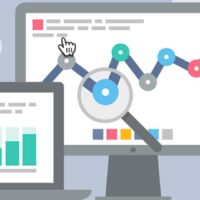
Written by Ben Landis – Digital Project Management and Social Media Strategy at WebEnertia
Influencer Marketing is currently one of the hottest topics in the marketing industry. When we think of an influencer, generally we typically think of a content creator with a huge social media following who shares and promotes products and brands.
Influencers sending out a simple Instagram or Snapchat post can potentially help with sales for business to consumer (B2C) brands.
In a business to business (B2B) context, making a simple Instagram post about a data center or SaaS platform and expecting that to increase your sales is not realistic.
Can We Influence B2B Stakeholders?
On average, the enterprise software selling cycle can take around 6 months. B2B buyers are extremely educated and are skeptical about marketing and sales techniques.
To overcome their skepticism, we must turn to a trusted 3rd party–influencers.
B2B influencers differ than B2C influencers. B2B influencers are normally are journalists, analysts, bloggers, consultants, and influential technologists.
Now that we have established that influencer marketing has a place in the B2B space, let’s figure out how we can implement it.
Understanding the 1:9:90 Model of Influence.
First, we need to understand 1:9:90 model of influence so we can understand influencers and their reach.
- The 1% -In the B2B context, these people are the thought leaders. They are highly influential, credible, and most people will listen to them. They are normally members of the media, authors, or consultants.
- The 9% Promoters– These are the people that have a point of view on certain topics. They keep the conversation going. They are always having online discussions about a product, brand, or industry.
- The 90% Market– This is literally everyone else. They don’t contribute too much to the discussion, however, they are extremely good at consuming content.
It is in your best interest to target and discover the influencers that are relevant to your brand. If you can reach them, you are able to reach the rest of the market.
Identify the Right Influencers.
As marketers, it is so important that we look at influencer data to see which ones align with your brand. Using social listening software it is easy to identify potential influencers. There are four metrics to identify when selecting influencers: reach, relevance, resonance, and reference.
- Reach- This is a given. How large is their following on their digital channels–blogs, contributed posts, social media ( ie. LinkedIn and Twitter), etc? You want to make sure that these influencers can get a lot of eyeballs on their content.
- Relevance- Are these influencers discussing topics that relate to your brand? You want to work with influencers who are actively having conversations about your industry.
- Resonance- Are other people responding well to their content? Do their posts have a lot of engagement?
- Reference- Are other influencers actively talking about them? Are other influencers sharing, liking, and commenting on their content? If so, this definitely makes them more credible.
Implement a Strategy to Work with Influencers.
Once you have identified your influencers, it’s time to reach out to see if they can collaborate with your brand. Find multiple influencers who can be advocates for your brand and work with you on some branded content.
Invite them to write an e-Book or Whitepaper for you about a given topic you select. Let them have full editorial control regarding the topic.
Once that is completed your brand has a bunch of different options on how to proceed such as:
- Gate the content so you can generate leads for your brand and boost the post with paid media.
- Write a blog post highlighting the insights gained and link the blog to the content.
- Use $500-$1,000 of paid media to boost the influencer’s content assuming they blog/write about the branded content.
Working with influencers and thought leaders can help increase your brand awareness. Influencers bring your brand into the conversion. If your influence marketing strategy is done correctly your relevance in the marketplace, and sales/leads can increase significantly.
About Guest Contributor: Ben Landis is in Digital Project Management and Social Media Strategy with the digital agency WebEnertia in San Jose, CA.




